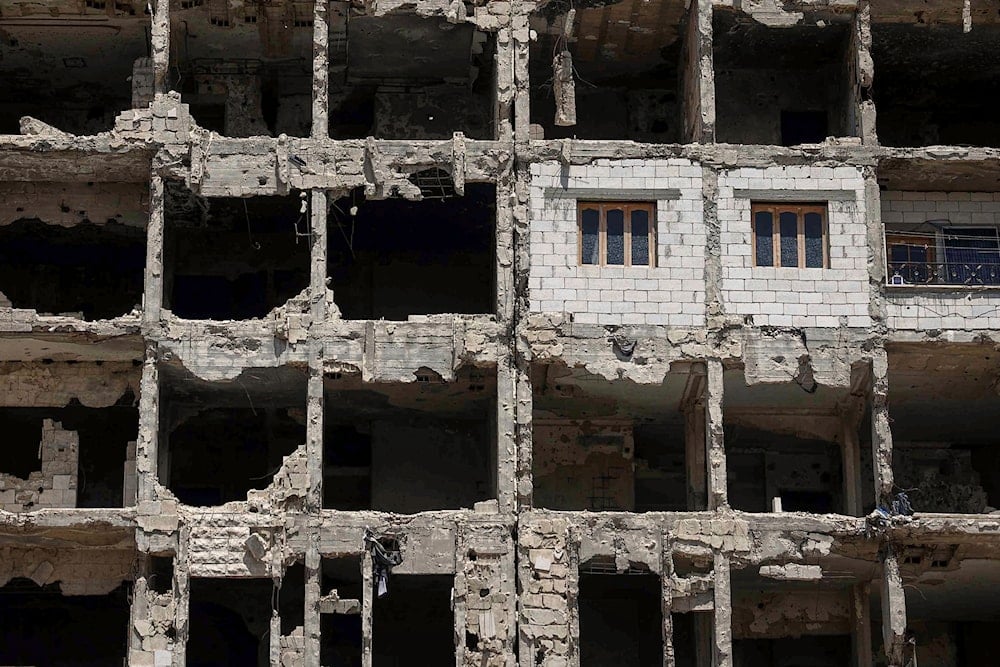Syrian women increasingly kidnapped for ransom or killing
Dozens of Alawite women have gone missing across Syria’s Tartus, Lattakia, and Hama provinces in 2025 as families plead for help.
-

The walls and windows of a recently restored apartment stand out on a damaged apartment building in the war-torn Al-Waer neighborhood of Homs, Syria, Tuesday, May 13, 2025 (AP)
Cases of women being abducted from Syria's Alawite community are increasing, with families of the missing flooding social media since last March with emotional appeals, desperate video messages, and posts begging for any information about their loved ones, according to Reuters.
According to the Reuters review, new abduction cases appear nearly every day, though the agency noted it found no online accounts of women from other communities disappearing at the same rate.
The agency reviewed roughly 12 calls and messages sent by the kidnappers of a 29-year-old Alawite woman named Abeer, who disappeared from the streets of Safita, Syria, with intermediaries communicating from a Syrian phone number and threatening to either kill her or sell her into human trafficking unless her family paid a $15,000 ransom.
The report identified her as one of at least 33 Alawite women and girls in Syria, ranging in age from 16 to 39 years old, whose families say have been kidnapped or disappeared this year during the unrest that followed the fall of the previous regime.
United Nations investigates the kidnappings
Syria's UN Commission of Inquiry reported it is actively examining multiple cases involving missing and abducted Alawite women after recording an unprecedented number of incidents throughout 2023.
A spokesperson for the commission, established in 2011 to investigate human rights violations, stated they will submit their findings to the UN Human Rights Council immediately upon completing their investigation.
Interviews with relatives of 16 missing women and girls revealed that seven cases appeared to be kidnappings, with families receiving ransom demands between $1,500 and $100,000. In three instances, including Abeer's case, families received messages claiming the women had been smuggled abroad.
No information has emerged about the fate of the nine remaining women. According to their families, eight of them were under 18 years old at the time of disappearance.
According to the agency, all 33 women disappeared in the Alawite provinces of Tartus, Lattakia, and Hama, and although about half were later able to return home, neither the survivors nor their families would speak about what happened, largely due to fears for their safety.
Most families interviewed by Reuters said they felt police did not take their reports of disappearances or kidnappings seriously, adding that authorities failed to conduct thorough investigations.
Syrian government out of reach
Syrian officials offered no response to the findings, but Tartus media director Ahmed Mohamed Khair dismissed claims of anti-Alawite targeting, asserting that disappearances were typically due to family conflicts or private matters, not kidnappings, despite failing to substantiate these claims with evidence.
A member of the fact-finding committee formed by Syria’s transitional leader, Ahmad al-Sharaa, to probe the March mass killings of Alawites in coastal areas, similarly refused to address the missing women cases.

 3 Min Read
3 Min Read










